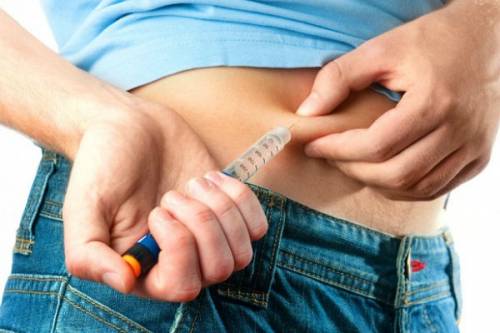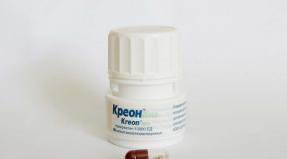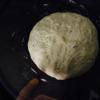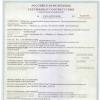Vinegar for diabetes
Vinegar is an essential attribute of any housewife's kitchen. Many of its species are known, but apple is considered one of the most useful. Not so long ago, the world spread the news about the ability of this product to cause the loss of hated extra pounds for many. In Japan, there was even a study that revealed the relationship between the inclusion of a small amount of apple cider vinegar in the diet with losing a few kilograms in 3 months. Probably, vinegar in a certain way changes the enzymatic activity of the body and activates the breakdown of body fat.
Large-scale studies have also been carried out regarding the use of this product in diabetes mellitus, which have proven that vinegar in diabetes can lower blood glucose levels. These scientific projects were initiated by US scientists led by Carol Johnston, who is the chair of the Department of Nutrition at the University of Arizona. She believes that vinegar, in combination with normalization of lifestyle and adherence to a proper diet, can improve glycemic control.
What is the benefit of vinegar?
Vinegar is obtained by fermenting alcohols with acetic acid bacteria with the addition of juices (apple, grape or others) or wine. According to the purpose of use, the product is divided into two types:
- food,
- technical.
The range of food types of vinegar is diverse:
- wine,
- rice,
- balsamic,
- apple,
- malt.
However, not all types of vinegar with the same benefit can be used for diabetes. For example, the usual table has a pronounced acidity, and balsamic and rice have a lot of sugar in their composition, so they are undesirable in the diet of people with reduced glucose tolerance.
Apple cider vinegar is ideal as an addition to the main therapy for diabetes.
The most useful is unrefined and unpasteurized vinegar, which contains a natural sediment from bacterial cultures. This product is useful for the body, due to its rich composition:
- vitamins (group B);
- minerals (calcium, phosphorus);
- trace elements (boron, potassium, magnesium, iron);
- acetic and fruit acids.
The tool can be used for diabetes mellitus, both type 1 and type 2. In violation of the metabolism of carbohydrates in this disease, vinegar contributes to:
- lowering the glycemic index of starch-containing foods;
- decrease in glucose levels after a meal (postprandial glycemia).
According to scientists, acetic acid blocks the action of some enzymes responsible for the breakdown of carbohydrate compounds (lactase, amylase, maltase). Thus, in the presence of acetic acid in the patient's intestines, carbohydrates cannot be fermented into simple sugars like glucose and absorbed into the bloodstream. They pass through the digestive tract without negatively affecting the glycemic level in the blood of a diabetic patient.
A researcher at the University of Arizona from the USA announced a small but persistent decrease in the level of glycated hemoglobin in the blood of diabetic patients who took 1 tablespoon of vinegar per day for 3 months. This indicator is considered the most important and modern laboratory criterion for assessing the compensation of diabetes mellitus.
Reference! Studies have shown that glucose levels in diabetic patients who took vinegar as a dietary supplement were 31% lower than in people who did not consume it.
In addition to the direct effect of this product on carbohydrate metabolism, it helps to improve bone mineralization, thanks to fluoride and calcium. It also causes a decrease in appetite and cravings for sweets, which plays an important role in the normalization of body weight, especially in patients with type 2 diabetes combined with obesity. Since the vinegar liquid is acidic, it can improve the digestion of food, especially if the patient has insufficient gastric juice production.
In addition to all of the above, apple cider vinegar helps to normalize the microflora in the intestines and activates the body's immune defense mechanisms.
How is vinegar used for diabetes?
The daily dosage of natural apple cider vinegar for diabetes is from 1 to 3 tablespoons. This is the safe amount of the product that has a therapeutic effect and should not cause any side effects. Do not forget that excessive use of acetic acid can adversely affect the mucous membrane of the stomach, esophagus and duodenum. Then there may be:
- abdominal pain;
- discomfort in the epigastric region;
- belching;
- heartburn.
Important! Like any method of non-traditional treatment of diabetes, vinegar therapy requires mandatory approval from the attending endocrinologist.
It is advisable to use vinegar with food, so its positive qualities for carbohydrate metabolism are better manifested. You can take the product in many ways, for example:
- as a component of dressing for salads or vegetable dishes;
- as a marinade for fish, vegetables, meat, from which they will become juicier and softer;
- in the form of infusion for drinking;
- as a solution in water and juices.
To reduce blood sugar levels in diabetes by 4-6%, you should drink apple cider vinegar without refining, 1-2 tablespoons, diluting it in a glass of drinking water.

If the patient is on insulin therapy, then before taking vinegar as a remedy, he should definitely consult with an endocrinologist, since the product can affect the daily need for insulin
To control postprandial sugar levels, you can drink this mixture before or during each meal: 30 ml of natural apple cider vinegar, a few drops of lime juice, 60 ml of cranberry juice, 2/3 cup of pure water. Some studies report blood sugar drops to half of baseline after regular use of this product.
Vinegar can also be taken as a prophylactic to prevent diabetes. To do this, it is enough to dilute 30 ml with 1 glass of plain water and drink the liquid 60 minutes before going to bed.
Attention! Apple cider vinegar is not a substitute for oral antidiabetic drugs or insulin therapy prescribed by a doctor. It serves only as an addition to the basic treatment.
Vinegar infusion is prepared as follows: 500 ml of apple cider vinegar pour 40 g of chopped beans. Close the jar tightly with a lid and send for infusion for 10 hours in a cool place, preferably without light. After this time, the drug is completely ready for use. Then, immediately before use, the product must be diluted by mixing 2 teaspoons of infusion with ¼ cup of boiled water. It should be taken before meals 3 times a day. It is advisable not to use during meals.
No less interesting is the recipe for using apple cider vinegar with a boiled chicken egg for diabetes of any type. To do this, boil a fresh hard-boiled egg, cool and peel it. Next, the egg must be pierced with a fork several times and dipped in vinegar, where it will infuse all night. In the morning, remove the egg from the solution and eat with one glass of water. This remedy, according to patients, perfectly helps to cope with hyperglycemia.

The use of apple cider vinegar as a dietary supplement for various types of diabetes is not a substitute for following a low-carbohydrate diet.
The duration of the course of treatment with vinegar is quite impressive - according to the recommendations, a positive effect can be observed after 6 months of its regular use.
Making apple cider vinegar at home
For those who don't trust the manufacturers of vinegar products and want to be completely sure of their quality, there is a great recipe for making real homemade apple cider vinegar:
- Take a glass, clay, wooden or enameled container of the desired volume.
- Wash the apples, peel the stalks and damage, pass through a juicer or simply grate with a grater.
- Pour the resulting mass with boiled warm water, observing the proportions: for 0.4 kg of applesauce, you need to take 500 ml of water.
- Add about 100 g of honey or natural fructose for every liter of water.
- Add about 20 g of yeast, based on the amount of water (per 1 liter).
- In the open state, the vessel is kept in a room where the air temperature ranges from 20 to 30 ° C.
- From time to time (about 3 times over the entire period), the mixture should be thoroughly kneaded for its uniform fermentation.
- After a 10-day period, the mixture is discarded on a gauze cut and carefully squeezed out. After which it is filtered again. The liquid is covered with gauze and left to ferment in heat until gas formation stops.
- Vinegar becomes ready for use after 1.5-2 months.
- The finished liquid should be bottled and corked. For reliable tightness, you can use melted wax, which must be applied under the bottle cap. Store apple cider vinegar in a cool place away from light.

Homemade apple cider vinegar is an unrefined product, which means it will bring more health benefits to a patient with carbohydrate metabolism disorders.
Who Shouldn't Use Vinegar?
The flip side of the coin when using this acidic product can be its potential harm to the patient, so it has a number of contraindications for use:
- the presence of diseases of the gastrointestinal tract (esophagitis, reflux disease, gastritis, duodenitis and ulcerative erosive lesions of the mucous membrane of the esophagus, stomach or duodenum);
- parallel administration of potassium preparations;
- osteoporosis;
- arthritis.
In diabetes mellitus, gastroparesis sometimes appears as a manifestation of visceral neuropathy, that is, a slowdown in the motor-evacuation function of the stomach. Patients with this complication should also not use vinegar, because it will further lengthen the time the food is in the stomach, and thereby worsen digestion.
Also, you can not use the product in undiluted form, because high acidity can aggressively affect not only the mucous membrane of the esophagus and stomach, but even damage tooth enamel.
Thus, the use of apple cider vinegar helps to more effectively deal with high blood sugar in diabetes. But still, one should not count on an instant result and abandon the main treatment of this disease.



















